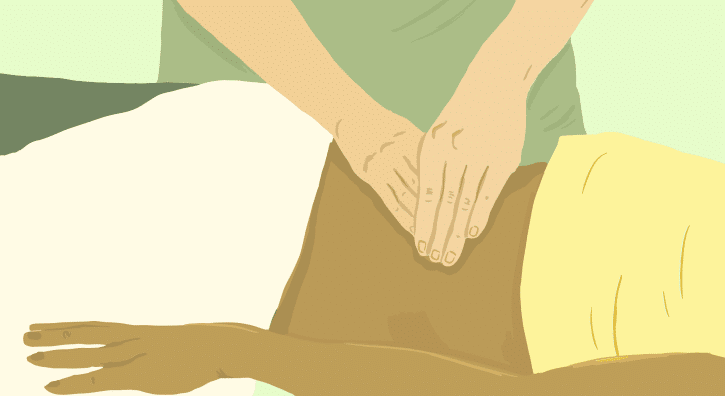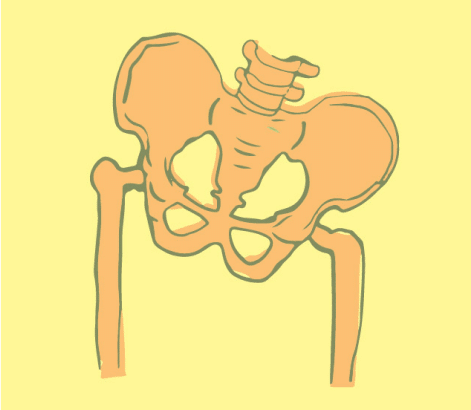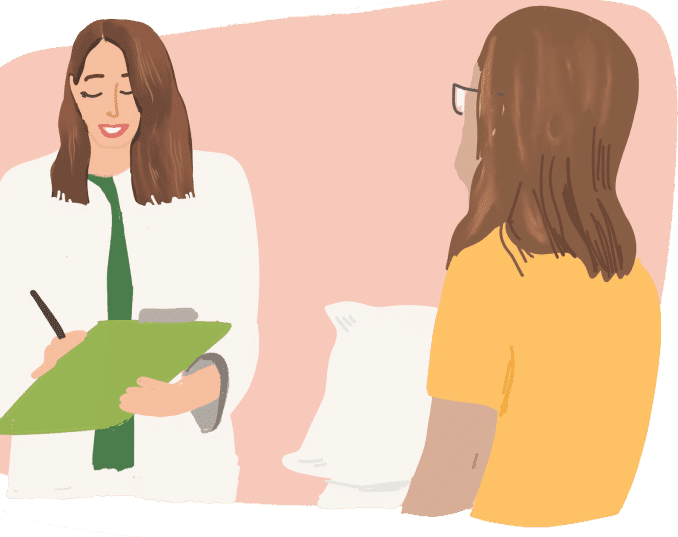

Symptoms
- Pain involving the vulva, vagina, anus, or perineum—often described as burning, itching, or throbbing—is a hallmark of pelvic pain
- Affected women may struggle with pain during sexual activity, heightened clothing sensitivity, and pain when seated for extended periods
- Physical exertion or specific workouts may bring on or worsen these issues
- Urinary symptoms may include the urgent need to urinate, pain during urination, frequent bathroom visits, or occasional leaks
- Pelvic pain may also coincide with gut-related issues like bloating, constipation, or overall discomfort
- Sometimes, symptoms are clearly triggered by penetration or tampon use, while at other times they appear without cause
- They may remain constant or come and go unpredictably

Symptoms
- Pain involving the vulva, vagina, anus, or perineum—often described as burning, itching, or throbbing—is a hallmark of pelvic pain
- Affected women may struggle with pain during sexual activity, heightened clothing sensitivity, and pain when seated for extended periods
- Physical exertion or specific workouts may bring on or worsen these issues
- Urinary symptoms may include the urgent need to urinate, pain during urination, frequent bathroom visits, or occasional leaks
- Pelvic pain may also coincide with gut-related issues like bloating, constipation, or overall discomfort
- Sometimes, symptoms are clearly triggered by penetration or tampon use, while at other times they appear without cause
- They may remain constant or come and go unpredictably

Associated Diagnoses
Diagnoses such as Endometriosis, Vulvodynia, Interstitial Cystitis/Painful Bladder Syndrome, Pudendal Neuralgia, Lichen Sclerosus, Lichen Planus, and Irritable Bowel Syndrome are associated with pelvic pain and pelvic floor dysfunction.


Causes of Pelvic Pain
- Repetitive vaginal and/or bladder infections and/or gynecologic, urologic, dermatologic or gastrointestinal conditions
- The majority of women with pelvic pain have pelvic floor dysfunction
- Prescription medications such as oral contraceptives, acne medications, and hormonal suppressive therapies for diseases such as Endometriosis and Polycystic Ovarian Syndrome (PCOS)
- Surgical trauma (childbirth, pelvic organ prolapse repair, hysterectomy)
- Orthopedic injuries or traumas
- Biomechanical or structural dysfunction (hip dysfunction, sacro-iliac joint dysfunction, piriformis syndrome, scoliosis, leg length discrepancy)
- Vaginal childbirth
- Menopause
- Genital cutting or genital mutilation
Symptoms
- Repetitive vaginal and/or bladder infections and/or gynecologic, urologic, dermatologic or gastrointestinal conditions
- The majority of women with pelvic pain have pelvic floor dysfunction
- Prescription medications such as oral contraceptives, acne medications, and hormonal suppressive therapies for diseases such as Endometriosis and Polycystic Ovarian Syndrome (PCOS)
- Surgical trauma (childbirth, pelvic organ prolapse repair, hysterectomy)
- Orthopedic injuries or traumas
- Biomechanical or structural dysfunction (hip dysfunction, sacro-iliac joint dysfunction, piriformis syndrome, scoliosis, leg length discrepancy)
- Vaginal childbirth
- Menopause
- Genital cutting or genital mutilation

Diagnostic Challenges
In Oceanside, women living with chronic pelvic pain often find themselves in diagnostic limbo for years—up to five years on average, and as long as 11 years for Endometriosis. That’s because the signs of pelvic floor dysfunction frequently mimic other health conditions, like bladder infections or STIs, making it difficult for providers to identify the true cause. Tests come back negative, leaving women feeling hopeless. What’s even more disheartening is how many women tell us they didn’t even know they had a pelvic floor until their pain became unmanageable and they finally found help through physical and occupational therapy.
Diagnostic Challenges
In Oceanside, women living with chronic pelvic pain often find themselves in diagnostic limbo for years—up to five years on average, and as long as 11 years for Endometriosis. That’s because the signs of pelvic floor dysfunction frequently mimic other health conditions, like bladder infections or STIs, making it difficult for providers to identify the true cause. Tests come back negative, leaving women feeling hopeless. What’s even more disheartening is how many women tell us they didn’t even know they had a pelvic floor until their pain became unmanageable and they finally found help through physical and occupational therapy.
Treatment:
How We Can Help You

For women in Oceanside who have been coping with unexplained pelvic pain, a specialized evaluation with a pelvic floor physical and occupational therapists could be the breakthrough you need. Your journey starts with a compassionate conversation about your health history, past diagnoses, and the success—or failure—of previous treatments. By the time many Oceanside women reach out to us, they’ve endured months or even years without clear answers. The physical portion of the evaluation includes checking the health of your pelvic muscles, surrounding tissues, nerves, and joints, and observing how your body moves. After your exam, your therapist will sit down with you to explain what’s happening and build a customized treatment plan focused on healing and relief. Typically, women attend therapy sessions 1–2 times a week for around 12 weeks and complete home exercises as part of their recovery. Our team also works closely with other professionals on your care team to ensure an integrated approach. You deserve relief, and we’re here to help.

Treatment:
How We Can Help You
For women in Oceanside who have been coping with unexplained pelvic pain, a specialized evaluation with a pelvic floor physical and occupational therapists could be the breakthrough you need. Your journey starts with a compassionate conversation about your health history, past diagnoses, and the success—or failure—of previous treatments. By the time many Oceanside women reach out to us, they’ve endured months or even years without clear answers. The physical portion of the evaluation includes checking the health of your pelvic muscles, surrounding tissues, nerves, and joints, and observing how your body moves. After your exam, your therapist will sit down with you to explain what’s happening and build a customized treatment plan focused on healing and relief. Typically, women attend therapy sessions 1–2 times a week for around 12 weeks and complete home exercises as part of their recovery. Our team also works closely with other professionals on your care team to ensure an integrated approach. You deserve relief, and we’re here to help.
How Can We Help You?
Please take a moment to submit any comments or questions through the form below. An email address is required in order for us to reply. You can trust that all your personal details will remain private and secure.

Join The Newsletter. Win a copy of our book, “Pelvic Pain Explained!”
We love getting to know our website visitors. Please tell us a little bit about yourself and get the latest info via PHRC e-newsletter!
*Subscribers automatically eligible to win our book, “Pelvic Pain Explained.”


